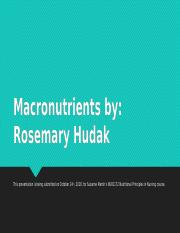If some amount within a range of loss appears at the time to be a better estimate than any other amount within the rage, that amount should be accrued. When no amount within the range is a better estimate than any other amount in the rage, the minimum amount in the range should be accrued. A contingency that might result in a gain usually should not be reflected in the financial statements because to do so might be to recognize revenue before its realization. Abrigo enables U.S. financial institutions to support their communities through technology that fights financial crime, grows loans and deposits, and optimizes risk.
- The company would also need to provide a reconciliation that would highlight changes in estimates of the amounts of loss contingencies previously reported, for each reporting period.
- We always use examples in our instructor-led training (ILT) materials as we believe it helps participants better understand the complex requirements within U.S.
- But, how will the FASB specificy which contingent liabilities would be recognized--'probable' contingent liabilities, or some other weaselly-worded standard for recognition?
- Stated another way, as AS 2 was written, and as proposed AS 5 is currently written, it should be unacceptable for auditors to adopt different threshold probabilities for different clients, or even for different financial statement amounts (although materiality thresholds may reflect case-specific factors).
- For example, a change from qualitative terminology (i.e., “more than remote” in AS 2, or “reasonably possible” in proposed AS 5) would simplify auditing standards, increase reliability of ICFR audits, and reduce audit and compliance costs.
Abrigo's platform centralizes the institution's data, creates a digital user experience, ensures compliance, and delivers efficiency for scale and profitable growth. While a 2023 deadline for non-SEC filers might sound like a long time to prepare, SEC filers that have already gone through CECL preparations have encouraged other financial institutions to begin preparing early for the change. Before proceeding further, it is important to note that Points A, B and C do not change.
Recent Comments
This is wrong, because weaselly wording runs contrary to normative economic principles on the application of judgment in decision making. These principles have been widely applied for generations, taught in all accredited schools of business and accounting (Managerial Economics 101), and incorporated into more recent accounting standards. FAS 5 refers to one of two underlying sources of accounting guidance factoring into the calculation of the allowance for loan and lease losses (ALLL) under GAAP, and it applies to those financial institutions and other entities not yet implementing the current expected credit loss model, or CECL. It is an adaptation of a much more diplomatic comment letter that I wrote to the PCAOB, criticizing its proposed, and ultimately adopted, definitions of 'material weakness' and 'significant deficiency' in AS 5. As you will soon see, my critique addresses a larger problem having to do with how poorly uncertainty (for example, contingent liabilities) is dealt with in key financial reporting standards. In the terms of proposed AS 5, this is the lower bound of “reasonably possible.” Further assume that the auditor determines the materiality threshold for a misstatement of revenues to be $1,000,000.
They are evaluated collectively, considering both quantitative (historical losses) and qualitative measures, which come in the form of environmental adjustments, in order to determine appropriate reserve levels. Abrigo’s ALLL.com resource website has many articles and other aids for calculating the FAS 5 portion of the ALLL for financial institutions not yet subject to CECL, FASB ASC Topic 326, Financial Instruments – Credit Losses. When exactly will financial institutions currently using FAS 5 and FAS 114 as their guidance need to begin applying CECL? Some may argue that quantitative probability thresholds constitute bright-line rules that are contrary to the notion of principles-based standard setting.
FTC Releases Proposed New Green Guides for Environmental Advertising Claims
Therefore, $400,000 (0.4 x $1,000,000) represents the maximum allowable expected misstatement (given that a misstatement is at least reasonably possible) such that an internal control weakness would not be disclosed as material. But, regardless of the FASB’s motives for promulgating SFAS 5 as it did, it was neither in the public interest, nor is it consistent with the PCAOB’s mission, to continue to follow their conveniently vague approach to dealing with uncertainty set forth in SFAS 5. In particular, What is FAS 5? investor protection is less than it could be due to the ambiguation through weasel words of the point between “more than remote” and “reasonably possible” in AS 5 (i.e, Point B in the above diagram). Blurring terminology adds judgment and cost to financial reporting while providing no discernible purpose that is consistent with the mission of the PCAOB. However, gain contingencies might be disclosed in the notes to the financial statements, but should not be reflected in income until realization.
What is the difference between FAS 5 and FAS 114?
FAS 5 and FAS 114 are the two underlying accounting guidance factoring into your ALLL calculation. Where FAS 5 is homogenous pools, FAS 114 in contrast is individual loans. So in FAS 5, we are grouping together loans that are deemed non-impaired. We are going to put them into buckets of similar type loans.
Care should be exercised in disclosing gain contingencies to avoid misleading implications as to the recognition of revenue prior to its realization. Therefore, Zebra should disclose the fact that it is involved in a suit with Lion and that an outcome is expected the following year, which is anticipated to be favorable. We all pretty much know that the threshold burden of proof to find someone guilty of committing a crime is 'beyond a reasonable doubt.' What does that mean? Methinks that individual jurors have their own personal definitions for 'reasonable doubt.' However, to express uncertainty as a quantitative probability might create more problems for the jury-serving public than it would solve.
Just Say No…to Recording a Gain Contingency under ASC 450 (old FAS
Zebra Inc. is a small, regional design company that specializes in mesmerizing black and white images. Lion Co. is a large, well-established international design company that takes what it wants when it wants. Zebra filed a $10 million lawsuit against Lion for predatory business practices, alleging Lion stole several of Zebra’s designs without its permission. At the end of the year, the lawyers for both companies believe Zebra will win the lawsuit, putting its chances of success of between 75-80%. Furthermore, Lion’s lawyers believe Lion will settle the lawsuit in the coming year, paying between $4.5 million and $8.5 million. Camden National Bank, the winner of the Celent Model Bank Award for Risk Management in 2018, decided to shift to an automated approach ahead of CECL.

The company would also need to provide a reconciliation that would highlight changes in estimates of the amounts of loss contingencies previously reported, for each reporting period. Finally, the company would be required to disclose the terms of relevant insurance and indemnification agreements applicable to the loss contingency. For each loss contingency requiring disclosure under the proposed standard, the company would need to disclose more granular quantitative and qualitative information. Specifically, the required disclosures would include the “amount of the claim or assessment” or the company’s “best estimate of the maximum exposure to loss” where there is no claim or assessment amount. The PCAOB is simply wrong to expect an auditor to obtain reasonable assurance for its opinion within the framework of AS 5 without undertaking a process substantially similar to the one described by the above example.
Stated another way, as AS 2 was written, and as proposed AS 5 is currently written, it should be unacceptable for auditors to adopt different threshold probabilities for different clients, or even for different financial statement amounts (although materiality thresholds may reflect case-specific factors). Another plus of automating the ALLL was that the platform Camden selected included methodologies appropriate for both the incurred credit loss model and for the expected loss model under CECL. Choosing a solution that can calculate both the ALLL now and the allowance for credit losses under CECL will make it easier as financial institutions https://accounting-services.net/current-liabilities/ transition to CECL from FAS 5 and FAS 114 (guidance on accounting for impaired loans under the incurred loss method of GAAP). For both FAS 5 and AS 5, probability thresholds can be, and therefore should be, explicitly quantified. For example, a change from qualitative terminology (i.e., “more than remote” in AS 2, or “reasonably possible” in proposed AS 5) would simplify auditing standards, increase reliability of ICFR audits, and reduce audit and compliance costs. Such a change would better protect the interests of investors and further the public interest through greater clarity and transparency of auditing and financial reporting.

Recognizing the increased exposure to issuers that these expanded litigation risk disclosures could bring, FASB is proposing that expanded disclosure would not be required where it could be “prejudicial” to the company’s position in the litigation. The exception would allow the company to “aggregate” the required disclosures for litigation contingencies, and disclose them in such a way that the information would not be linked to each particular loss contingency. In “rare instances” when aggregation would not prevent prejudice, a company would be allowed to omit the disclosure of its qualitative assessment of the most likely outcome of the litigation.
Current FAS 5
Keep up-to-date on the latest insights and updates from the GAAP Dynamics' team on all things accounting and auditing. Click here to extend your session to continue reading our licensed content, if not, you will be automatically logged off.
This is supposedly because (1) auditors were familiar with how to apply the weasel words of FAS 5, as they have been around since 1975; and (2) 'more than remote' is not a term used by FAS 5. The first reason is disingenuous, because everybody is aware that auditors have been ineffective in curbing abuses of FAS 5 by their clients. In FAS 5, 'more than remote' is indeed a lower threshold than 'reasonably possible.' Evidently, weasel words can beget weasel logic. It has long been a puzzlement to me that the SEC, FASB and PCAOB take the same vaguely-worded approach as the criminal law--as if accountants and managers were innumerate.


